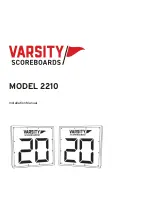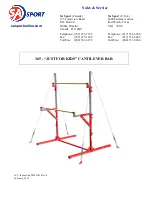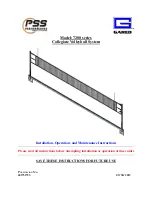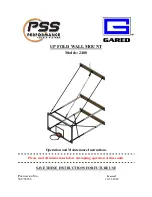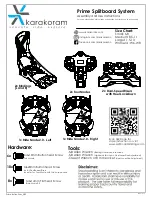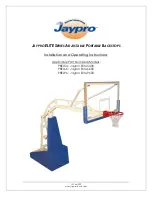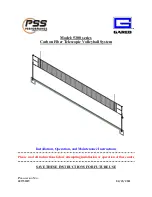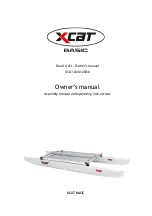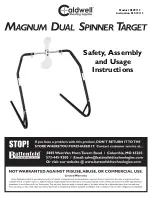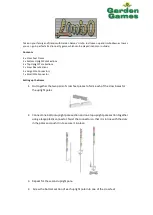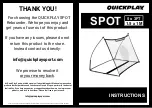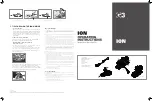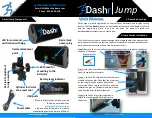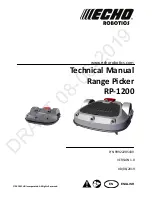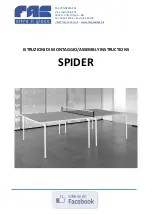
A GENERAL
Please read these instructions thoroughly before using this product and follow all the information contained
within. Failure to observe these instructions can lead to a reduction in the protection this product provides.
Please note: mountain climbing and indoor climbing are high-risk sports which can involve unforeseeable
dangers. Your decisions and activities in this sport are your own responsibility. Please familiarise yourself with
all associated risks before attempting climbing of any sort. SALEWA recommends that before attempting any
climbing, you should obtain training and advice from suitably qualified persons (for example mountain guides
or climbing teachers). In addition it is the user‘s responsibility to keep himself or herself informed of the correct
techniques for carrying out safe rescue operations. The manufacturer bears no liability in the case of any misuse
or abuse of this product. Also check for the appropriate certification of all other pieces of equipment.
This product is made in conformity with PPE regulation (EU) 2016/425.
You can view the EU Declaration of Conformity under www.salewa.com.
The product meets the third category for personal protective equipment (PSA).
B INSTRUCTIONS FOR USE
Only use the product for the purpose for which it was constructed and never burden it beyond its limits.
: Danger to life
: Risk of injury
: Correct use
WARNING:
Misuse of this tool can lead to sever injury, falls and even death. You must be aware of this and
should only use this tool if you master its correct use.
The proper use and its possible misuses will be described in the ILLUSTRATIONS.
WARNING:
We have not shown all possible misuses.
Carefully read the instructions for use and follow the sequence of movements correctly. Watch the online
video tutorial at www.salewa.com It is essential to be taught the proper belay techniques by a professional.
The HMS-Belay Twist Lock carabiner was developed especially for use with the Ergo Belay System and com-
plies to the EN 12275:2013 norm. Do not use the clove hitch knot to belay with this carabiner.
This product protects against risk of falling during climbing.
1. PRODUCT OVERVIEW
A) load rope, B) Emergency-braking-area, C) back part, D) anti-locking part, E) shutter, F) Salewa Belay Twist
Lock belay carabiner, G) guiding slot for carabiner, H) brake stud, I) Nose, J) braking side of the rope
2. PREPARATION
2.1. Make sure that only compatible and certified components are used in the belaying chain. The Ergo Belay
Device must only be used with the belay carabiner SALEWA Belay Twist Lock with anti-locking device. Using a
different type of carabiner can lead to failure of its functions.
WARNING!
Certain carabiners may lead to a malfunction of this device: You must not use the „DMM Belay
Master“ carabiner, under any circumstances, or any carabiner of similar manufacture.
2.2. The Ergo Belay System can be used with single dynamic ropes (complying with CE EN 892) with a diameter
between 8,6 and 11,0 mm. The ideal function is guaranteed between 9,0 and 10,5 mm. Please note that the
diameter of commercial ropes may command an acceptable discrepancy of up to 0.2 mm
2.3. The rope has to be inserted into the device as illustrated in the image. The load and breaking rope must
be in the correct position, as illustrated in the image and in the figure on the device. Thread the Salewa Belay
Twist Lock through the inserting slot of the Ergo BS and also through the passing rope loop and subsequently
hang the carabiner in the belay loop of your harness. Attach it to the anti-locking device of the carabiner. Make
sure that the twist of the carabiner is fully closed.
3. PARTNER CHECK
Both rope partners – the belayer and the climber - have to double-check that the climber is properly tied in and
the rope is correctly inserted into the belay device (blocking test). Furthermore, the carabiner holding the belay
device will have to be properly closed and attached to the harness of the belayer. The correct buckling and
fastening of both harnesses will also be checked, and a knot will be tied to the end of the rope.
4. BRAKING FUNCTION TEST
IMPORTANT:
Make sure that the blocking function works by putting a heavy strain on the load rope.
To guarantee the proper braking function, the device must be attached to the carabiner so that it can freely
tip downwards, and nothing must be in the way of this movement. The rope will then be pinched between the
belay carabiner and the braking stud.
The blocking and braking function can vary according to the rope used, and depends, among other things, on
the rope diameter, its rigidity, the surface condition and the coating of the rope. Humidity and wear can also
play a part.
Any person using this belay device must be familiar with its braking functions before use.
5. PRINCIPAL BELAYING POSITION
The brake hand grips the braking side of the rope directly underneath the device, with the nose of the device
remaining in a free position. The leading hand pulls the load rope.
WARNING:
THE BRAKE HAND ALWAYS HOLDS AND CONTROLS THE BRAKING SIDE OF THE ROPE (the free side of
the rope), regardless of its effective function (give slack, retrieve the rope, arrest a fall, block, release) – after
every function has been completed, IT HAS TO RETURN TO THE PRINCIPAL BELAYING POSITION.
Holding the nose steadily obstructs the blocking function and can therefore lead to a fall.
WARNING:
This device must not be used to belay a climber directly from above. If used from above, the braking
and blocking function are invalidated. In this case, make sure that the rope above the device is redirected to
the climber.
6. GIVING SLACK
To give out slack, the pulling hand tugs the load rope from the device. At the same time, the thumb of the brake
hand lifts the device on its nose. During this operation, the brake hand holds the breaking side of the rope for
the whole time. After having given slack, the brake hand returns immediately to the principal belaying position,
along the rope, and does not touch the rope any longer. (Point 5)
WARNING:
Do not leave the braking side of the rope with the brake hand, at any point.
7. TAKING IN SLACK
The braking hand pulls the braking side of the rope forward at a maximum angle of 40°, towards a horizontal
position – over the device, while the other hand pushes the load rope from above into the device. Subsequently,
the brake hand moves below along the rope, back in the principal belaying position (Point 5)
WARNING:
you are advised not to pull the braking side of the rope at a steep angle, as the blocking function will
not be activated, if the climber falls at this moment and the brake hand is not brought back below.
8. ARRESTING A FALL
Hold the braking side of the rope with the brake hand tight underneath the device in the principal belaying
position (Point 5), while the other hand is casually open around the load rope.
WARNING:
It is imperative that the brake hand holds the braking side of the rope tight (brake hand principle).
Failure to do so may lead to a fall.
9. LOWERING THE CLIMBER
To release, the thumb of the other hand holds the device on the back and makes a controlled press forward, while
the forehand gently pushes the nose upwards. The brake hand holds the braking side of the rope and releases it
slowly, with a controlled move, sliding from top to bottom in the device.
The lowering speed is controlled by the interaction between the brake hand and the other hand. The feeding
hand releases the blocking on the back, while the brake hand controls the braking operation. Do not pull the
device backwards, as this intensifies the release.
WARNING:
The release must be learnt properly and then practiced, for it is imperative that the interplay
between the brake hand and the other hand is flawless.
In case of big friction, push the device further forward-above.
In case of thin or wet ropes, which may have blocked the device, loosen it with some movements of the other
hand.
WARNING:
Do not use the function of giving out rope. It prevents a controlled release and may lead to a fall.
10. MISUSE:
· The rope has been wrongly inserted in the device.
· Although the rope has been inserted correctly, the device has been wrongly attached to the carabiner.
· The rope has been wrongly inserted in the device and the device has been has been wrongly attached to
the carabiner.
WARNING:
In all these cases, the blocking function is deactivated. Notwithstanding, the tool still functions as a
belay device. Inform the climber and lower him, as soon as you notice these malfunctions. Pull the braking side
of the rope onto the emergency braking-area and put it gently from the bottom in the device, with both hands.
Do not leave the braking side of the rope until the climber has been released.
· Putting the brake hand over the belay device while arresting a fall.
· While arresting a fall, the device is lifted on its nose or cannot tilt easily in the braking position if pushed on
its back.
· The brake hand is not on the braking side of the rope.
· While releasing the climber, the braking side of the rope is not inserted from bottom to top in the device, but
pulled back onto the emergency braking-area. The brake function is reduced this way!
C SAFETY INSTRUCTIONS
Before use, carefully check each product part. Diagram C
Double check all the components of this product for wear marks, chips, bends and corrosion, and replace if
needed. Make sure that the gate closes properly.
Belay device: Double check especially the brake studs for wear marks. Make sure that the rivet in the brake stud
is secure and properly anchored to the case of the device.
The device needs to be checked constantly, even during use, for any damage. You have to be absolutely sure
that the nothing obstructs the brake function.
Carabiners: Carabiners are manufactured so as to be loaded lengthways. Every other direction of load will
reduce the supporting load. Especially avoid compressive load and any other pressure on the gate.
You should take into account that the gate may open during use due to inauspicious rope friction or vibrations.
Please double check regularly during use that the carabiner is still properly locked.
The instructions for use supplied with the product are always to be stored with the product. This product is only
to be used by appropriately trained and/or competent persons, or when the user is under the direct supervision
of such a qualified person.
WARNING
·If there is the least doubt about the safety of the product, it is to be replaced immediately.
·Any change to this product can reduce safety significantly.
D LIFESPAN
The lifespan of the product is dependent on a number of factors, such as the manner and frequency of use,
moisture, affects of weather, storage conditions, and dirt (sand, salt, etc.). Under extreme conditions the
lifespan can be reduced to a single usage or even less, if the equipment has suffered damage (for example
during transport) before ever being used. Please note: Products manufactured from synthetic fibres are
subject to ageing even when not used. This ageing depends mainly on environmental conditions as well as
the impact of UV light.
The potential lifespan of metal products is unlimited, since the effective lifespan depends on the previously
mentioned factors. Salewa recommends the replacing of products after maximum ten years.
E CLEANING, STORAGE, TRANSPORT AND SERVICING
See diagram E for guidelines on correct storage and care.
Do not allow this product to come into contact with aggressive chemicals (e. g. battery acid, solvents) or
expose it to extreme temperatures as these events can have a negative impact on the mechanical features
of the materials.
Ensure that the product is kept safe during storage and transport and is protected from damage.
Using the device in case of humid, wet or ice conditions does not compromise its function, although it is not
advisable to store and transport the device under these conditions.
If necessary (contact with dirt, salted water or other agents), clean the tool in clean, lukewarm water and leave
to dry at room temperature.
When they are worn out, replace them exclusively with new original components from Salewa.
F IDENTIFICATION LABELS
Belay Device & Carabiner
: Manufacturer’s brand
ERGO:
Product name
EN 15151-2
: The standard with which the product complies
: Pictogramm indicating that the directions must be read.
ø 8.6-11.0mm:
the smallest and biggest rope diameter allowed
: Explanatory note: side of the braking part of the rope
: Explanatory note: side of the load rope with the climber
xxAmmyy:
Information on traceability
xx:
Index (Reference to current drawing)
A:
Production batch
mm:
Month of manufacture (01 = January)
yy:
Year of manufacture (13 = 2013)
HMS BELAY:
Product name
121
: The standard with which the product complies
:
Confirms adherence to the Ordinance (EU) 2016/425
2008:
Number of certifying body
Certified by:
DOLOMITICERT S.C.A.R.L., Z.I. Villanova, 32013 Longarone (BL), Italy
x:
Longitudinal breaking load in kN
x:
Lateral breaking load in kN
x:
Breaking load when open in kN
: Class H carabiner (HMS- carabiner)
Made in Italy::
Country of origin
SALEWA - Oberalp S.P.A., - Via Waltraud Gebert Deeg Strasse 4, I-39100 Bozen - Italy:
Brand, name and
address of manufacturer
[EN]




















